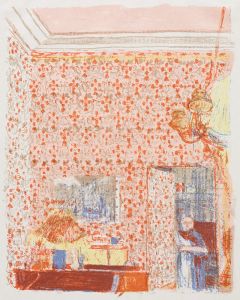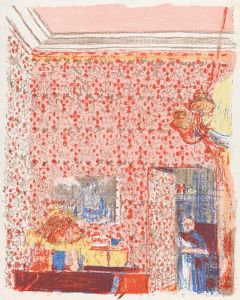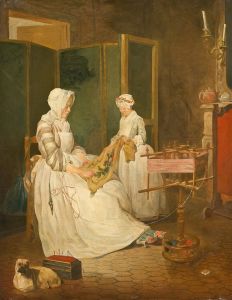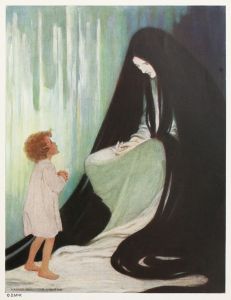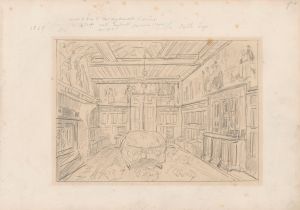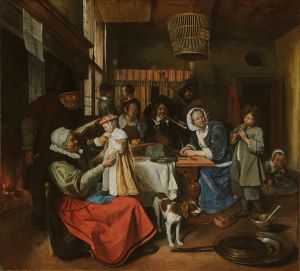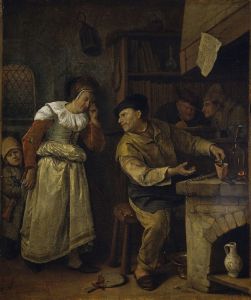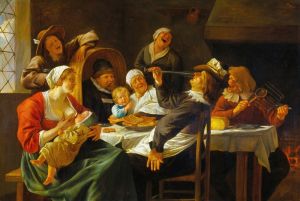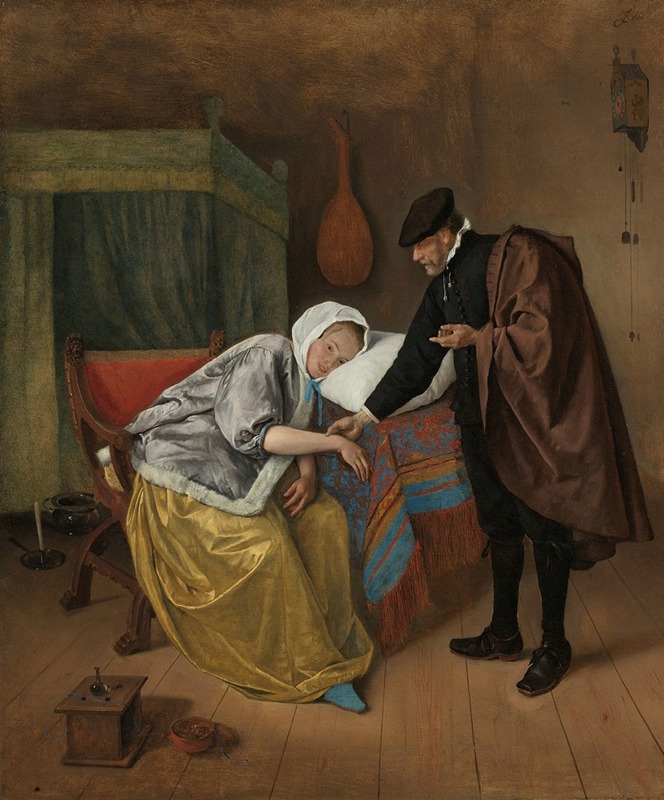
The Sick Woman
A hand-painted replica of Jan Steen’s masterpiece The Sick Woman, meticulously crafted by professional artists to capture the true essence of the original. Each piece is created with museum-quality canvas and rare mineral pigments, carefully painted by experienced artists with delicate brushstrokes and rich, layered colors to perfectly recreate the texture of the original artwork. Unlike machine-printed reproductions, this hand-painted version brings the painting to life, infused with the artist’s emotions and skill in every stroke. Whether for personal collection or home decoration, it instantly elevates the artistic atmosphere of any space.
Jan Steen, a Dutch Golden Age painter, is renowned for his lively and often humorous depictions of 17th-century Dutch life. One of his notable works, "The Sick Woman," exemplifies his ability to capture the intricacies of human emotion and domestic scenes. Painted around 1660, this artwork is a fine example of Steen's genre painting, a style that portrays scenes from everyday life.
"The Sick Woman" presents a domestic interior where a woman is depicted in a state of illness. She is seated, looking pale and weary, with her head resting on her hand, a common pose used to signify melancholy or illness in art. Beside her, an older woman, possibly a maid or a relative, tends to her needs, offering a glass of wine or medicine. This interaction highlights the theme of care and compassion within the household. The setting is intimate, with a warm, dimly lit room that suggests a sense of privacy and comfort.
Steen's attention to detail is evident in the various objects scattered around the room, which add layers of meaning to the scene. A bed is partially visible, indicating the woman's need for rest, while other household items, such as a chamber pot and a foot warmer, emphasize the domestic setting. The presence of a doctor or a quack, a common figure in Steen's works, is absent in this painting, which shifts the focus entirely on the personal and familial aspect of dealing with illness.
The painting is also notable for its use of color and light. Steen employs a warm palette, with rich browns and reds, to create a cozy atmosphere. The light source, possibly from a window or a fireplace, softly illuminates the scene, casting gentle shadows that enhance the mood of quiet concern and care. This use of light not only adds depth to the composition but also draws attention to the central figures, emphasizing their emotional states.
Jan Steen was known for embedding moral lessons in his paintings, often through the use of symbolism and allegory. In "The Sick Woman," the moral could be interpreted as a reminder of the fragility of health and the importance of familial support. However, unlike some of his more satirical works, this painting is more subdued and empathetic, focusing on the genuine human experience rather than overt humor or critique.
Steen's ability to convey complex emotions and narratives through his art has made him a significant figure in Dutch painting. "The Sick Woman" is a testament to his skill in capturing the subtleties of human interaction and the domestic sphere. Today, this painting is appreciated not only for its artistic merit but also for its insight into the social and cultural dynamics of the Dutch Golden Age.
While "The Sick Woman" may not be as widely recognized as some of Steen's other works, it remains an important piece within his oeuvre, showcasing his talent for blending realism with narrative depth. The painting continues to be studied and admired for its portrayal of a timeless and universal theme: the care and compassion found within the home during times of illness.





